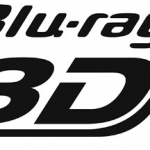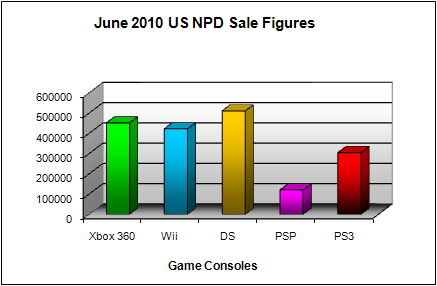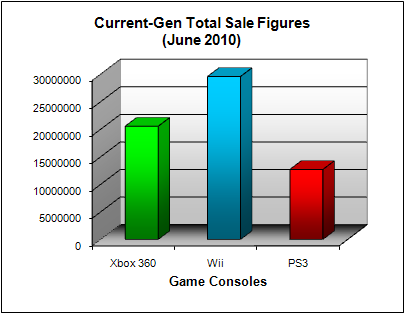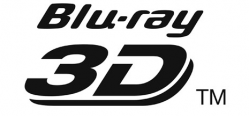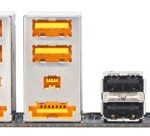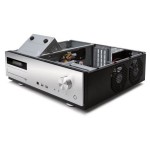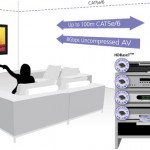Hello. I’ve finally completed moving house, by completed, I of course mean that there’s still tons of stuff that needs to be moved over. But this is the first WNR at the new place. But the roundup must go on, as they say, despite aching limbs and a sleep deprived brain. One good thing about the move was that I was finally able to test Blu-ray 3D playback via PowerDVD 10 Mark II to my Samsung 3D plasma. More on that later.

Let’s start with copyright news. The US Copyright Group is in the news again this week as they step up their campaign targeting thousands of web users accused of downloading pirated movies.
The latest development sees the USCG hiring the services of smaller law firms signalling the next phase of their plans – going to court. It was always understood that firms like the USCG would avoid going to court whenever possible, since the costs are higher and so are the risk (of losing, and hence, setting a precedent that could hurt future business). But it appears the USCG is pressing ahead anyway, no doubt going after those that are easy to beat in court. It may also be their way of showing that they do intend to go to court, a criticism that critics have used in the past to attack similar actions, and if they can get a few easy victories under their belt, maybe a high profile one, then this can be used to scare more people into paying up. And as for working with the EFF to draft a user friendlier notice to send to suspected pirates, it seems the two sides just can’t get along and both may have to go and see the judge again to see how they can get things moving. This isn’t the biggest surprise in the world, as one side wants to make the notices are serious as possible to get people to pay up, while the other want the notice to be informative enough to allow people to defend themselves – it was always difficult, if not impossible, to meet both objectives.
While the USCG aren’t winning friends with web users, ISPs and rights groups, they are making friends in other media circles, and at least one law firm is now copying their strategy, except going after those who pirate newspaper articles, rather than movies. Suing hundreds of websites and blogs is Las Vegas based Righthaven, representing the owners of the Las Vegas Review-Journal. While most newspapers use DMCA takedown notices to get their full articles removed from forums and blogs, there is no money that can be made by taking this approach. But if the threat of a lawsuit, and the request for a pre-trial settlement works for the USCG on movie downloaders, then the thinking is that website owners will do the same as well, even when the offending content was posted by one of its users, not the website itself. The recent Viacom versus YouTube action showed that user generated websites do have protection from the safe harbor provisions under the DMCA, as long as they have a clear anti copyright infringement policy in place and enforces this policy consistently. So one might think this would apply to forums where users have posted full articles against forum rules, or blogs where users have made the same post in the comments. But the fear of an expensive lawsuit means that many will simply pay the settlement fee to avoid the trouble, although others are willing to challenge the claims in court. If this model works, expect all other newspaper owners to follow suit, as most of them are struggling to keep profits from dropping in what many calls a dying industry.
Moving to Europe now, it appears ISPs in many countries are not happy at their respective government’s three-strikes policies, and are going to court to fight it. Three-Strikes, or similar laws, may appear to be aimed at users who download pirated content, but it is in fact aimed at ISPs, making them responsible for monitoring and “sentencing”, for want of a better word, their own subscribers. The cost of the operation will have to be absorbed by the ISP, and mistaken identifies or other errors could even see the ISPs sued. The ISPs argue that since the music labels and movie studios are the one that will supposedly benefit from piracy being reduced, they’re the ones that should play a more active role in enforcing three-strikes. The content owners, however, will argue that they’re the victims in this and that ISPs should just pass on the cost to subscribers. The big question is if this wasn’t about the Internet, would government, who are normally clueless about Cyberspace, be so willing to give in to the demands of copyright holders? If people were committing copyright infringement via the telelphone, let’s say something silly like reading out loud books or newspaper articles to the person on the other end, should the telephone company then be tasked with spying on users’ conversations so they can put a stop to this illegal practice? Should the government then help to make spying legal and part of the copyright laws? ISPs are nothing more than utility companies, like the gas, electricity or telephone companies, and making them responsible for what their subscribers do with the service just doesn’t seem right. And if there are any technical advantage that make ISP level “spying” easier, then it would still be unfair to make ISPs bare the entire cost of the operation. It’s forcing one industry, and tax payer money, to protect another industry’s revenue stream for no reason other than it’s the easy thing to do.
The Swedish Pirate Party wants to do something about ISP snooping though, and they are planning to launch their “Pirate ISP”, which will ensure no data about users if kept, so that their privacy is protected. The idea is nice, but I can already see the lawsuits and search, arrest warranty being typed up, probably before the ISP is even launched.
And when Hollywood is finished getting the government and ISPs to do their bidding, for free, they will turn their targets on those that try to innovate too much. Because innovation could eventually lead content being published without having to be controlled by publishers, and that spells bad news for revenue. Google TV is next in Hollywood’s cross-hairs it seems, as the new proposed system which aims to present a common interface for viewing media, online and offline, on TVs may just be too innovative for Hollywood’s liking. In their submission to the FTC, Hollywood studios claims that Google TV could potentially allow users to interact with both legal and illegal media, in the same interface, and that’s will encourage users to all become pirates. Instead of seeing how such an innovation could revolutionize the way people buy content on the Internet, and instead of supporting Google, a company with a history of knowing how to get money out of the Internet and its users, they yet again focus on the piracy issue and the issue alone. Just like how music labels refused to work with digital music retailers and instead focused on more and more complicated layers of DRM, and then having the likes of Apple iTunes swallow up a huge chunk of Internet related profit that otherwise would have gone to the labels, Hollywood appears to be making the same mistake.
Instead, their solutions is, you guessed it, more DRM. Hollywood’s new fairer DRM scheme, supported by pretty much all the studios expect Disney (who have their own proprietary system in the works), is now called UltraViolet. How is it friendlier? Well, it plans to make DRM protected files more portable, working in more players and systems, but it still has the stench of DRM all over it, and thus, all the same usual problems: lack of universal compatibility, the need for online authentication, and don’t expect the files to work forever as there is no guarantee whatsoever that any DRM system will be kept supported and updated (at high cost by the DRM operators) forever. The IEEE is also working on their own “fairer” DRM, which will make digital files more like physical objects, in that ownership can be transferred, so sharing something with a friend could mean that you lose the ability to use the file forever if your friend do not return ownership back to you. The scheme, called P1817, could even work in conjunction with the monster that is UltraViolet, to make everything a bit fairer you see. The funny thing is that by acknowledging the need to make things fairer, content owners have just acknowledged that DRM, at least in past forms, have not been fair to users. I would go one step further and say that DRM is always unfair to users, so if you want them to accept it, make sure you give them back something in return. Whether’s that lower prices, better services, or even just less hoops to jump through, it is needed. Content owners should not take users for granted, as they may just go elsewhere (and if there’s no legal alternative, guess where they will be, and have been, heading to?)

In HD/3D news, as mentioned in the introduction, I managed to get PowerDVD 10 Ultra 3D with the Mark II patch to play a Blu-ray 3D movie and have it display as proper 3D on my new Samsung 3D plasma TV.
It took a bit of work trying to get it to work, but I’ve posted the instructions here for those that want to give it a go. The 3D effects are great, even if you’re not getting full 1080p resolution, but that will only be possible when updated drivers are available for my ATI Radeon HD card. For now, it means I can play Blu-ray 3D movies in 3D without a standalone Blu-ray 3D player (although my free bonus one, part of a promotion Samsung were running here in Australia, should be on its way from Samsung, hopefully arriving before the PS3 gets its Blu-ray 3D update).
But while I wait for my Blu-ray 3D player to arrive, it may already be obsolete, thanks to the idea of “upgradeable hardware” introduced by the Blu-ray format. The idea says that, like software, there may be a new version out every year and you would need to pay to get the new version, if you want the latest features. We’ve already had Profile 1.0, 1.1 and 2.0 players, and I guess Blu-ray 3D counts as 2.5 or something. And when BDXL movie discs arrive (if they arrive), then we’ll all need new players again (4.0, since 3.0 is already taken by the fairly unused Blu-ray audio format). It’s nice having 128GB capacity, but not so nice when I have to yet again upgrade my Blu-ray player, despite how cheap players have become. Even the always versatile PS3 won’t be able to support BDXL, since the only thing that the PS3 can’t update through software, the Blu-ray drive itself, will need to be updated. And soon after Blu-ray 4.0, we’ll have Super-Blu-ray 1.0, with Sony promising a 1TB disc using an even more powerful laser. Downloads, streaming, storage lockers … if only everyone had the bandwidth to make download a Blu-ray quality movie a matter of minutes, rather than hours (or weeks, in certain Internet backwaters, like Australia), then we could get rid of the disc altogether, or burn our own discs by only replacing the optical drive in your computer, as opposed to an entire standalone player. It’s bad for the environment, bad for our wallets, and it’s just annoying.
But at least one thing to do with Blu-ray is going disc-less. Netflix streaming on the PS3 will finally work without a Blu-ray disc, and it only took a year after Netflix was first available on the PS3, and several after the Netflix was originally launched on the Xbox 360 (which had disc-less streaming from the get go). Better late than never, I suppose.
![]()
And finally in the ever rarer gaming section, Microsoft has finally revealed the official Kinect pricing. Which is exactly the same as the unofficial pricing all the retailers have been using for months.
The only surprise, and a good one, is that the $149.99 price includes a free game, Kinect Adventures. But it was Microsoft’s other announcement which were a bit more interesting, like the new “Arcade”, the Xbox 360 4GB, which is basically the same piece of hardware as the new “Slim” Xbox 360 250GB, except without the 250GB HDD of course. The price for this new console is $199, but if you buy it with Kinect in a bundle, it will be $299, so that’s another $50 off Kinect’s pricing if you buy it with the new console. Some will say that this attempt to compete with the Wii is doomed to failure, because the Wii will be much cheaper. But the Xbox 360 doesn’t need to be the same price as the Wii, since it’s a much better console (certainly plays more types of games than the Wii, in HD too). There’s no Xbox 360 250GB Kinect bundle, which is a shame because that’s the one I would like to buy. Kinect pre-orders on Amazon jumped back to the top 5 after the pricing announcement on Wednesday, but has since dropped down to 21. The Move bundle is at 49th.
And that’s the news I have for this week. Sorry about the rushed nature of this WNR, what with all the mistakes and mindless rambling, moving house takes a lot out of a person. You didn’t notice any differences? That’s good then. What do you mean “it’s same crap as usual”? Huh? Anyway, here’s to a less crappy WNR next week.







